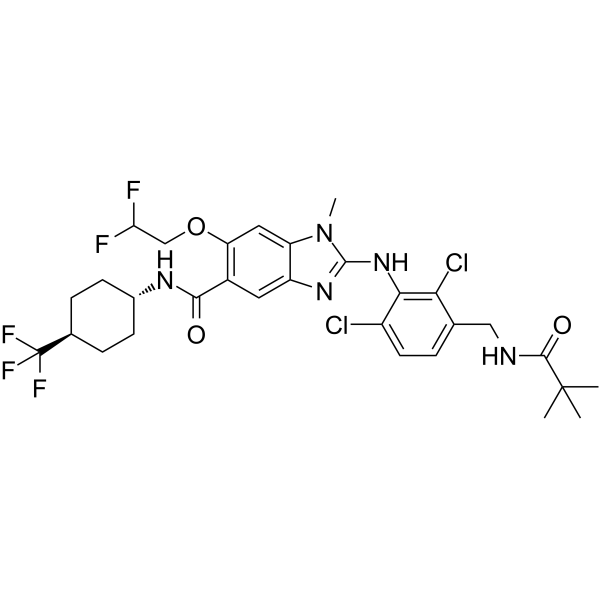| In Vivo |
Vipoglanstat (BI 1029539, GS-248) (30 mg/kg; i.p.) can reduce LPS-induced lung injury, with reduction in neutrophil influx, protein content, TNF-ɑ, IL-1β and PGE2 levels in bronchoalveolar lavage (BAL), myeloperoxidase activity, expression of mPGES-1, cyclooxygenase (COX)-2 and intracellular adhesion molecule in lung tissue. Vipoglanstat (BI 1029539, GS-248) (30 mg/kg; p.o.; 2 hrs, 8 hrs and 22 hrs) significantly reduces sepsis-induced BAL inflammatory cell recruitment, lung injury score and lung expression of mPGES-1 and inducible nitric oxide synthase. Vipoglanstat (BI 1029539, GS-248) (30 mg/kg; p.o.; QD) also significantly prolongs survival of mice with severe sepsis[2]. Animal Model: LPS-induced acute lung injury models[2] Dosage: 30 mg/kg Administration: 30 mg/kg, i.p. Result: Preserved lung architecture and reduced immune cell influx into the lungs of LPS‑challenged mice. Animal Model: CLP-induced sepsis models[2] Dosage: 30 mg/kg Administration: 30 mg/kg, p.o., 2 hrs, 8 hrs and 22 hrs; 30 mg/kg, p.o., QD Result: Attenuated CLP‑induced lung injury and prolongs survival.
|
